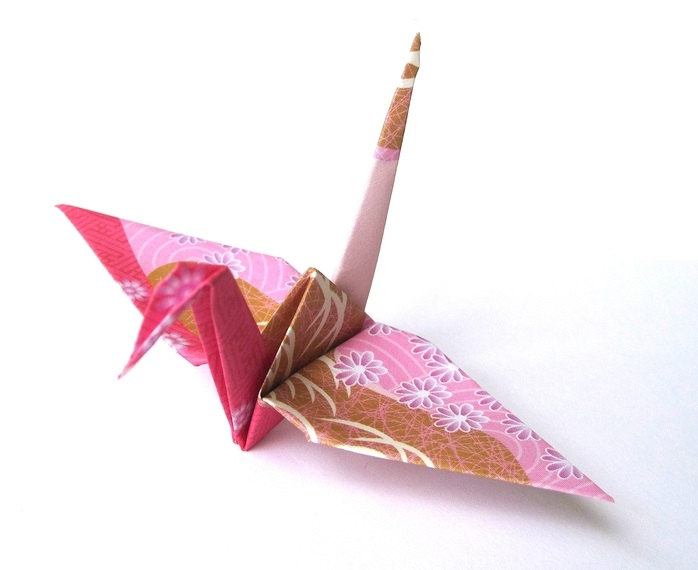

Sadako was just 2 years old when the atomic bomb was dropped on her home town, Hiroshima. (Courtesy of Sasaki Masahiro and the Hiroshima Peace Memorial Museum)īehind this global recognition of the power of paper cranes lies the story of Sasaki Masahiro’s younger sister, Sadako. When 12 boys and their soccer coach were trapped in flooded caves in Chiang Rai, Thailand, in June 2018, the classmates of one boy folded 1,000 cranes in three days to pray for the group’s safe return. As the crane is a symbol of long life, strings of 1,000 paper cranes, or senbazuru in Japanese, are often offered as a get-well gift expressing hope for a person’s recovery, as a sign of support for natural disaster victims, or encouragement for sports teams.īut paper cranes are starting to become known around the world as a tangible form of prayer for peace or a way to show of support for people facing difficult challenges.
#Paper crane origami how to#
Origami, the art of folding paper to make decorative items, is a common indoor entertainment in Japan, and most people learn how to fold an origami crane in their youth. President Barack Obama and Caroline Kennedy, then US ambassador to Japan, folding paper cranes during the President’s historic visit to Hiroshima in 2016.(© Jiji Press) I sensed from those folded cranes both his humanity and that message.” Obama later donated two more paper cranes to the second atomic bomb target, Nagasaki. “Even though he couldn’t give an apology as President, I think he was delivering a personal message that he was sorry. Sasaki Masahiro, author of Sadako no senbazuru ( Sadako’s Thousand Cranes), was amazed when he heard that the president had made the cranes himself. He brought with him four paper cranes that he had folded himself.

Once you know the basic folds then this will be much easier.In May 2016, Barack Obama became the first sitting US president to visit Hiroshima, site of the world’s first atomic bombing in 1945. If you’ve never tried origami before then we recommend you check out our beginner’s guide first. We’ve put together the following instructions to walk you through exactly how to fold one yourself. All you need is a single square sheet of paper. Making an origami crane is actually not too difficult. Many of these cranes have been donated to places such as the 9-11 memorial in New York City, Pearl Harbour, the Museum of Tolerance and more places as a symbol of peace. In the hospital she spent her time folding origami cranes hoping to make 1,000 of them.Īccording to Sadako’s family she managed to fold approximately 1,400 paper cranes. Due to the fall-out from the bombs Sadako developed leukaemia. The story follows a Japanese girl name Sadako who was 2 years old when the United States bombed Japan at the end of World War II. The origami crane’s popularity is largely due to a children’s book written by author Eleanor Coerr called “ Sadako and the Thousand Paper Cranes.” If you fold one and give it away that one doesn’t count. In Japan the crane is said to live for 1,000 years which is why one must fold 1,000 of them. You have to keep all the cranes to get the wish though. In same cases you are granted happiness or good luck. The Japanese name for this model is “Orizuru” which simply means “Folded crane.” “Ori” is the same “Ori” that you find in the word origami.Īn ancient Japanese legend promises that if anyone folds a thousand paper cranes they will be granted a wish by the gods. In Japanese mythology this crane is known as the “Honourable Lord Crane” and it wings carried souls up to heaven. It’s designed after the Japanese red-crowned crane. The traditional paper origami crane is probably the most famous of all origami models.


 0 kommentar(er)
0 kommentar(er)
